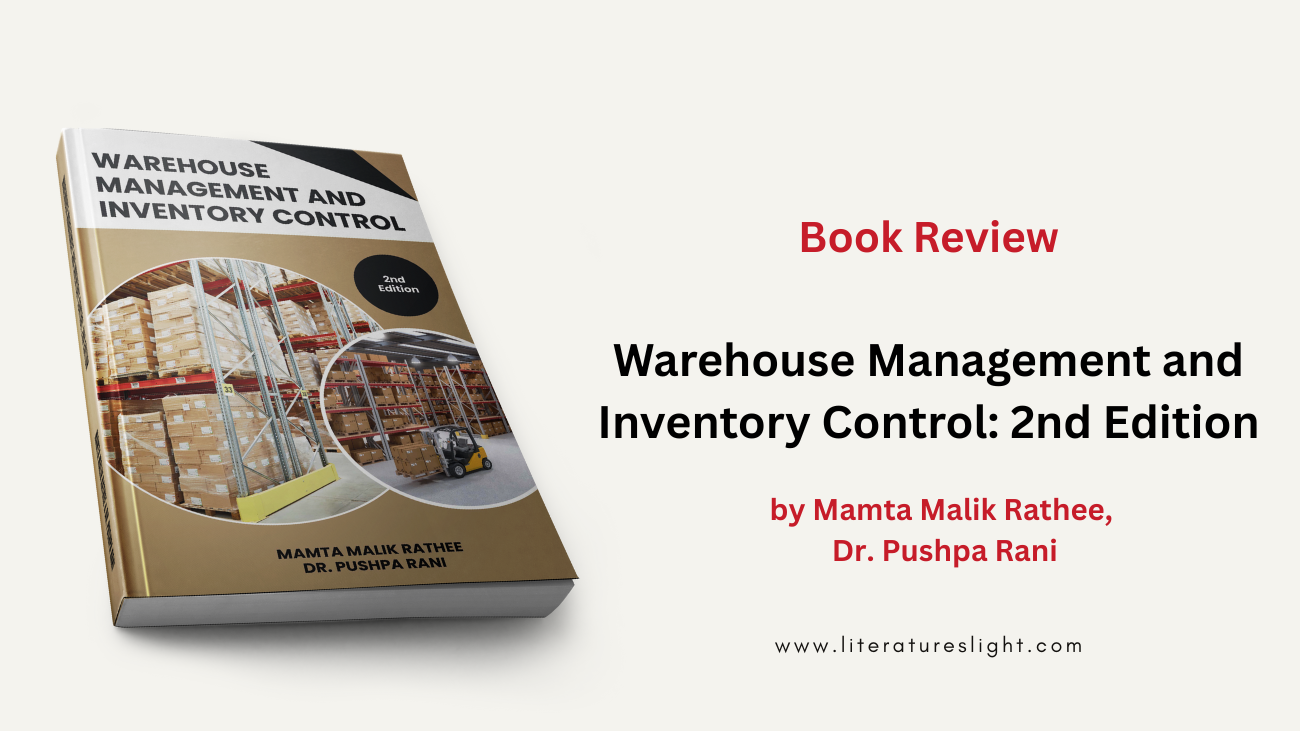Warehouse Management and Inventory Control: The Key to Modern Supply Chain Success
In the rapidly evolving logistics industry, Warehouse Management and Inventory Control (Second Edition) by Mamta Malik Rathee and Dr. Pushpa Rani offers a comprehensive understanding of modern warehousing. The book explores how traditional warehouses have transformed into strategic, technology-enabled hubs that balance supply and demand efficiently.
With the rise of automation, Artificial Intelligence (AI), robotics, and IoT, warehouse management has become the cornerstone of supply chain success, driving both efficiency and sustainability.
The Evolution of Warehouse Management in the Digital Era
Warehousing has moved far beyond simple storage functions. Today’s smart warehouses operate as strategic centers that optimize logistics and inventory flow across global supply chains.
From Traditional Storage to Smart Warehouses
The book emphasizes how automation and ERP-based Warehouse Management Systems (WMS) have revolutionized warehouse operations. Modern systems enable real-time inventory tracking, predictive analytics, and process automation, making warehousing faster, more reliable, and cost-effective.
The Role of AI and IoT in Modern Warehousing
AI and IoT technologies allow warehouses to achieve data-driven decision-making, reducing manual intervention and errors. Smart sensors, robotics, and digital twins now power warehouse efficiency, providing end-to-end visibility across supply networks.
Core Concepts in Warehouse Management and Inventory Control
This book thoroughly examines the essential principles that define effective inventory management and warehouse operations in the 21st century.
Material Handling and Inventory Classification
Efficient material handling systems and ABC inventory classification methods ensure the smooth movement and prioritization of goods, helping organizations maintain order accuracy and reduce storage costs.
Inventory Optimization: EOQ, JIT, and Lean Systems
The authors discuss models like Economic Order Quantity (EOQ) and Just-in-Time (JIT), emphasizing how lean management eliminates waste while ensuring availability.
Collaborative and Outsourced Warehousing
Concepts such as Vendor Managed Inventory (VMI) and the increasing role of Third-Party (3PL) and Fourth-Party Logistics (4PL) providers highlight the growing trend toward collaborative, outsourced logistics solutions.
Technology and Automation: Transforming Warehouse Management Systems (WMS)
One of the major themes of the book is how technology is reshaping warehouse operations. Automation and ERP-integrated WMS platforms enable seamless data exchange between departments and across the supply chain.
Automation and Robotics in Warehousing
Automated Storage and Retrieval Systems (ASRS), robotic palletizers, and autonomous vehicles are now integral to warehouse efficiency. These technologies reduce operational time and improve precision in order fulfillment.
ERP and Cloud-Based WMS Integration
Integrating WMS with Enterprise Resource Planning (ERP) systems ensures unified visibility, better demand forecasting, and improved workflow synchronization across all business functions.
Safety, Sustainability, and Standard Operating Procedures (SOPs)
Operational safety and sustainability are critical to modern warehousing. The authors highlight the need for Standard Operating Procedures (SOPs) that promote workplace safety, efficiency, and environmental responsibility.
Safety and Risk Management in Warehouses
By following strict safety protocols and SOPs, warehouses can prevent accidents, ensure compliance, and maintain employee well-being.
Green Warehousing and Sustainability Initiatives
The book also focuses on eco-friendly warehouse operations, such as using renewable energy, recyclable materials, and energy-efficient designs that reduce carbon footprints.
Case Studies: Learning from Global and Indian Warehousing Leaders
Real-world examples make the concepts in this book highly practical.
Global Leaders: Amazon, Walmart, and Toyota
Case studies of industry giants illustrate how leading organizations implement automation, AI, and lean practices to maintain global competitiveness.
Indian Organizations: CWC and FCI
Examples from Central Warehousing Corporation (CWC) and Food Corporation of India (FCI) demonstrate the growing adoption of modern technologies and management systems in India’s warehousing sector.
About the Authors
Mrs. Mamta Malik Rathee
Mrs. Rathee holds a B.Sc. (Hons) and M.Sc. in Botany, along with a B.Ed., and currently serves as an Executive (Technical) at the Central Warehousing Corporation (CWC). With over six years of professional experience, she has contributed significantly to storage standards, quality control, and sustainable warehouse practices. Her published research and conference participation reinforce her commitment to advancing the warehousing industry.
Dr. Pushpa Rani
Dr. Pushpa Rani, Head of the Department of Business Administration at the World College of Technology and Management, holds a Ph.D. in Management, MBA in Finance and HRM, and M.Com. With more than 17 years of academic experience, she specializes in financial management, HRM, marketing, and project management. Her extensive research and publications bring depth and academic rigor to the financial and strategic elements of warehouse management.
Why “Warehouse Management and Inventory Control” is a Must-Read
This second edition of Warehouse Management and Inventory Control is an essential resource for students, professionals, and policymakers looking to master modern warehousing. By combining theory with real-world applications, and incorporating the latest technologies, the book offers actionable insights for building efficient, resilient, and future-ready warehouse systems.






